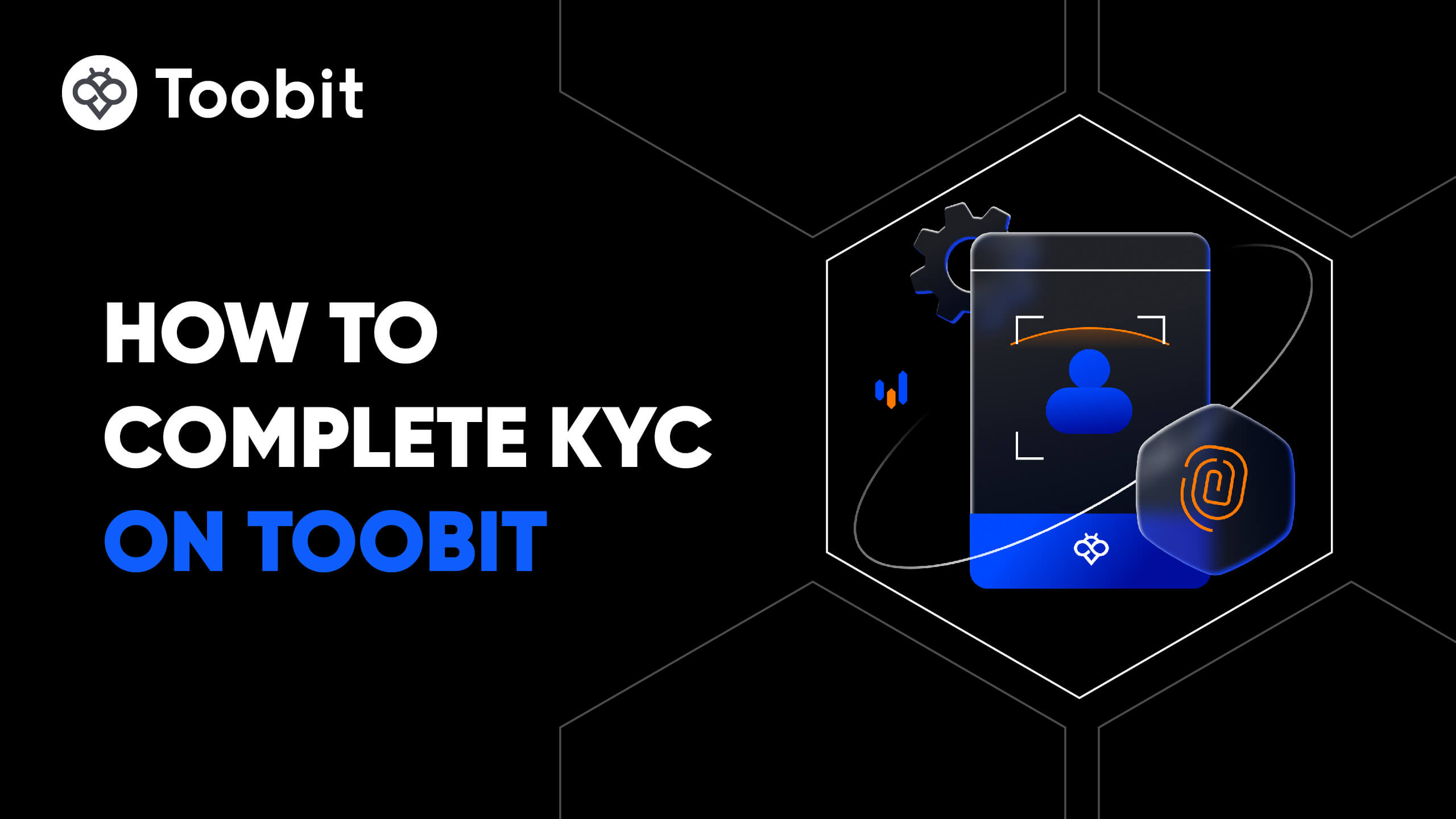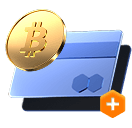--USD+0.00%1D
本日(UTC+0)、--時点でのundefinedにおけるLQTY (LQTY)の価格は-- USDです。
LQTYからUSDへのリアルタイム価格チャート(LQTY/USD)
LQTY のマーケット情報
価格パフォーマンス(24時間)
24時間
24時間 安値 --
24時間 高値 --
歴史的な高値
--
価格変動(24時間)
+0.00%
価格変動(7日間)
--
市場ランキング
#-
時価総額
--
24時間 の取引量
--
循環供給
100.00M
最大供給量
100.00M
総発行数量
--
リンク
USD における本日の LQTY のリアルタイム価格
現在の LQTY のリアルタイム価格は -- で、現在の時価総額は -- です。LQTY の価格は過去24時間で 0.00% 上昇しており、24時間の取引高は -- です。LQTY/USD(LQTY から USD)の変換レートはリアルタイムで更新されます。
1 LQTY は でいくらですか?
現在、 における LQTY (LQTY) の価格は -- です。今なら、1LQTY を USD で購入できます。過去24時間では、LQTY から USD の最高価格は --、最低価格は LQTY から USD で -- です。
LQTY(LQTY)に関して
Liquity は、ユーザーが Ether (ETH) を担保として無利子ローンを確保できるようにする分散型借入プロトコルです。この革新的なプラットフォームは、米ドルに固定されたステーブルコイン LUSD を導入し、借り手はこれをローン金額として受け取ります。Liquity が他の借入プロトコルと異なる点は、利息とガバナンスに対する独自のアプローチです。
LQTY の価格履歴
時間
価格制限
低い
高い
24h
+0.00%
--
--
0d
+0%
$0
$0
0d
+0%
$0
$0
0d
+0%
$0
$0
なぜ LQTY の価格は常に変動するのですか?
LQTY の価格パフォーマンスに影響を与える要因は何ですか?
グローバルな LQTY の価格
LQTY は現在、他の通貨でいくらの価値がありますか?最終更新:--(UTC+0)。
LQTY の購入方法
無料のToobitアカウントを作成
メールアドレス/携帯電話番号および居住国を使用してToobitに登録し、アカウントを保護する強力なパスワードを作成しましょう。
本人確認を行う
個人情報と有効な写真付きIDを提出して本人確認を完了してください。
支払い方法を追加して LQTY (LQTY) を購入
Toobitアカウントの認証完了後にクレジット/デビットカードや銀行口座を追加してください。複数の支払い方法でToobit上の LQTY を購入できます。
LQTY 無期限先物を取引する
Toobitに登録してUSDTまたはLQTYトークンを購入すると、LQTY先物取引やマージントレードなどのデリバティブ取引を開始して収益を増やすことができます。
リードトレーダーと一緒に LQTY コピー取引に参加
Toobit に登録して USDT または LQTY トークンを購入すると、リードトレーダーをフォローしてコピートレーディングを始めることができます。
LQTY はどこで購入できますか?
Toobitアプリで暗号資産を購入
数分で登録し、クレジットカードまたは銀行振込で暗号資産を購入しましょう。
Toobitで取引する
暗号資産をToobitに入金し、高い流動性と低い取引手数料をお楽しみください。
ビデオセクション — 簡単本人確認、迅速な取引

Toobitで本人確認を完了し、詐欺から身を守る方法
- 1.Toobitアカウントにログインしてください。
- 2.Toobit を初めてご利用の方は、アカウント作成方法のチュートリアルをご覧ください。
- 3.ナビゲーションバーの右上にあるプロフィールアイコンをクリックし、「本人確認」ページをタップしてください。
もっと
LQTYに関するFAQ
Liquityとは何ですか?
Liquityは、最先端の分散型借入プロトコルであり、ユーザーがイーサ(ETH)を担保にして無利子ローンを取得できるようにします。従来の貸付プラットフォームとは異なり、LiquityはUSDにペッグされた独自のステーブルコインLUSDを導入し、借り手のローン額として機能します。Liquityを際立たせるのは、利息、手数料、ガバナンスに対する革新的なアプローチです。従来のプロトコルが継続的な利息を課すのに対し、LiquityはLUSDで発行されたローンに対して一度だけ0.5%の手数料を課します。これにより、継続的な利息の負担なしにETHを活用したいと考える人々にとって魅力的な選択肢となります。プロトコルはまた、最低担保比率を110%に設定し、市場の変動に対するバッファを提供し、システム全体の安定性を確保します。Liquityは非カストディアルベースで運営されており、ユーザーは第三者の信頼を必要とせずに担保を完全に管理できます。これにより、プラットフォームのセキュリティと信頼性が向上します。さらに、Liquityのインフラストラクチャは不変であり、従来のガバナンスシステムなしで運営されます。代わりに、市場状況に基づいて償還およびローン発行手数料を管理するためにアルゴリズム調整に依存しており、プロトコルをより強靭で効率的にしています。Liquityの重要な特徴は、アンダーコラテラリゼーションを防ぐために設計された独自の清算メカニズムです。担保の価値が下がった場合、システムはプロトコルの健全性と安定性を維持するために自動的に調整されます。さらに、Liquityは安定性プロバイダーとステーカーに報酬を与え、エコシステムが堅牢で安全であることを保証します。要約すると、Liquity(LQTY)は、ETH担保に対するステーブルコインメカニズムを通じて無利子ローンを提供することにより、分散型金融(DeFi)への新しいアプローチを提供します。低手数料、非カストディアル運営、ガバナンスフリーモデルに重点を置き、高度な安定性と清算機能を組み合わせることで、LiquityはDeFi分野で重要なプレーヤーとして位置付けられています。LQTY USDTに関心のある投資家やユーザーは、プロトコルのリスクと利益を理解するために徹底的な調査を行うべきです。LQTYの購入方法
LQTYを購入するには、以下の一般的な手順に従うことができます:1. 暗号通貨取引所を選び、アカウントを作成するLQTY取引をサポートする信頼できる暗号通貨プラットフォームを選択します。ToobitでもLQTYを購入できます。サインアップしてください。2. 認証を完了する(必須ではありません):詳細については、Toobitでの認証完了方法ガイドをお読みください。3. 資金を入金する:Toobitアカウントに資金を入金します。これはクレジット/デビットカードや暗号通貨ウォレットを通じて行うことができます。4. LQTYに移動する:アカウントに資金が入金されたら、プラットフォームのマーケットセクションに移動します。5. LQTYを購入する:利用可能な暗号通貨のリストからLQTYを見つけます。購入注文を出します。詳細については、Toobitでの暗号通貨購入方法ガイドをお読みください。LQTYを売る方法は?
ToobitでLQTYをUSDTに売却できます。詳細については、Toobitでのスポット取引方法に関するガイドをお読みください。現在のLQTYの価格は?
LQTYの価格をお探しですか?Toobitでリアルタイムに更新されるLQTYの価格をご覧ください。ToobitでLQTYを引き出す方法は?
ToobitでLQTYや他の暗号トークンをUSDTに引き出すことができます。詳細は、Toobitでの暗号通貨の引き出し方法ガイドをご覧ください。Liquityはどのように機能しますか?
Liquityは、Ether (ETH) 保有者がネイティブステーブルコインであるLUSDの形でローンを取得できる分散型借入プロトコルです。Liquityの際立った特徴は、ローンの発行と償還に関連する手数料を調整するためのアルゴリズム的アプローチの使用です。この動的な手数料構造により、プロトコルは市場の状況に対して強靭で応答性を保ち、分散型金融 (DeFi) ユーザーにとって堅牢なオプションとなっています。分散化を強化するために、Liquityはユーザーがサードパーティのフロントエンドオペレーターを通じてプロトコルと対話できるようにしています。これらのオペレーターはエコシステムにおいて重要な役割を果たし、シームレスなユーザー体験を促進しながらプロトコルの分散型の性質に貢献しています。Liquityの重要な特徴の一つは、ユーザーがLUSDを預けてLQTYを報酬として受け取ることができるStability Poolです。このプールは、担保不足のローンから担保を吸収することでプロトコルの安定性を維持し、システムを保護するために不可欠です。さらに、フロントエンドによって生成される収益は、ユーザーがStability Poolに預けるLUSDの総額に比例して増加し、フロントエンドオペレーターとLiquityエコシステム全体の間に相互に利益をもたらす関係を築きます。要約すると、LiquityはETH担保とアルゴリズム的手数料調整を活用することで、ユニークで分散型の借入アプローチを提供します。Stability Poolとサードパーティのフロントエンドオペレーターを通じて、プロトコルはユーザーに安全で効率的なDeFi体験を保証します。Liquityの潜在的なユースケースは何ですか?
Liquityは、イーサリアムブロックチェーン上に構築された画期的な分散型借入プロトコルで、ユーザーがイーサ(ETH)を担保として無利息ローンを取得できるようにします。この革新的なプラットフォームは、急速に進化する暗号通貨空間内でデジタル資産を活用するための、より費用対効果が高く効率的な方法を提供します。Liquityが他の貸借プラットフォームと異なるのは、利息に対する独自のアプローチです。継続的な金利を課す代わりに、Liquityは一度だけの借入手数料を請求し、伝統的および分散型金融(DeFi)プラットフォームに一般的な複利を避けたいユーザーにとって魅力的な選択肢となっています。さらに、Liquityはわずか110%の低い担保比率で運営されており、システムの安定性と借り手の資本効率のバランスを取っています。Liquityのエコシステムの中心には、USDにペッグされた検閲耐性のあるステーブルコインがあり、ローンの媒体として機能します。このステーブルコインは借入を容易にするだけでなく、DeFi空間内で安定した信頼性のある通貨を提供することでプロトコルの全体的なユーティリティを向上させます。Liquityはまた、ユーザーがプラットフォームに参加し報酬を得るための複数の機会を提供しています。プロトコルの回復力に貢献する安定性プロバイダーや、そのセキュリティをサポートするステーカーは、さまざまな報酬メカニズムを通じてインセンティブを受けます。これらのインセンティブは積極的な参加を促進するよう設計されており、Liquityエコシステムの長期的な健康と成長を確保します。ユーザーインセンティブに加えて、Liquityはフロントエンド開発者や早期採用者を報酬することで活気あるコミュニティの育成に大きな重要性を置いています。これらの重要な貢献者を認識し報酬を与えることで、Liquityは広範な採用を促進し、堅牢で分散型のネットワークを構築することを目指しています。要約すると、Liquityは無利息ローン、低担保比率、ステーブルコインベースのシステムを提供することで、分散型貸借を再定義します。参加者や開発者に対するさまざまなインセンティブを備えたLiquityは、DeFiセクターのリーディングフォースとしての地位を確立しつつあります。しかし、暗号通貨やDeFiプロトコルへの投資には常にリスクと利益が伴うため、ユーザーは関連するリスクと利益を十分に理解するために徹底的な調査を行うべきです。Liquityの歴史は何ですか?
Liquityは、研究責任者でもあるRobert Laukoによって設立された、革新的な分散型金融(DeFi)プロトコルで、Ether(ETH)保有者に無利息の借入を提供することを目的としています。Ethereumメインネットでローンチされ、貸し借りに対する革新的なアプローチでDeFi分野で急速に認知されています。設立以来、LiquityはユーザーがETHを継続的な利息の負担なしに活用できる分散型借入プラットフォームの提供に注力しています。プロトコルの重要な要素は、ユーザーがLUSDを預けてLQTY報酬を受け取ることができるStability Poolであり、エコシステム内での参加をさらに促進します。Liquityチームは継続的な改善に専念しており、プロトコルの機能とユーザー体験を洗練するために定期的にアップデートと強化を行っています。その独自の提供と革新へのコミットメントにより、LiquityはDeFiムーブメントの最前線に立ち、Ethereumコミュニティに信頼性が高く効率的な借入ソリューションを提供し続けています。Liquityの価格予測指標
移動平均は、Liquity(LQTY)の価格動向を予測するために広く利用されているツールです。これらの指標は、選択された期間のLQTYの平均終値を計算し、トレーダーが潜在的な市場動向を特定するのに役立ちます。例えば、LQTYの12日間単純移動平均(SMA)は、過去12日間の終値を合計し、それを12で割ることで計算されます。SMAに加えて、トレーダーはしばしば指数移動平均(EMA)に依存します。EMAは最近の価格により重点を置くため、価格変動により迅速に反応することができます。暗号通貨市場で最も一般的に使用される移動平均には、50日、100日、200日平均があります。これらは、重要な抵抗とサポートレベルを特定するための主要な指標です。LQTYの価格がこれらの平均のいずれかを上回ると、通常、Liquityにとって強気のシグナルと見なされます。逆に、LQTYが重要な移動平均を下回ると、市場の潜在的な弱さを示す可能性があります。移動平均以外にも、トレーダーは相対力指数(RSI)やフィボナッチリトレースメントレベルなどの追加の指標を利用して、LQTYの価格動向をより正確に予測します。Liquityのチャートを読み、価格変動を予測する方法は?
ローソク足チャートは、Liquity(LQTY)の価格動向を分析するためにトレーダーの間で好まれるツールです。これらのチャートは、単純なラインチャートよりも詳細な情報を提供します。トレーダーは、5分足のローソク足チャートから超短期の価格動向を、週足のローソク足チャートから長期のトレンドを識別することができます。最も人気のある時間枠には、1時間足、4時間足、1日足のローソク足チャートがあります。例えば、1時間足のローソク足チャートを考えてみましょう。チャート上の各「ローソク」は、1時間の間におけるLiquityの価格動向を表しています。この時間枠内で、ローソク足はLQTYの始値、終値、そしてその時間内に達した最高値と最安値を表示します。ローソクの色は迅速な分析において重要です。緑のローソクは、LQTYが始値よりも高い価格で終わったことを示し、上昇の勢いを示します。一方、赤のローソクはその逆で、下降トレンドを示します。一部のチャートでは、色の代わりに空または塗りつぶされたローソクのボディを使用して同じ情報を伝えることがあります。これらのローソク足パターンを解釈することで、トレーダーは市場のセンチメントやLQTYの将来の価格動向に関する貴重な洞察を得ることができ、ローソク足チャートは効果的な取引戦略のための不可欠なツールとなります。Liquityの価格に影響を与える要因は何ですか?
Liquity(LQTY)の価格動向は、他のデジタル資産と同様に、主に供給と需要のダイナミクスによって駆動されます。これらは、ブロック報酬の半減期、ハードフォーク、新しいプロトコルの更新などの基本的なイベントによって大きく影響を受ける可能性があります。さらに、規制の変更、企業や政府による採用、暗号通貨取引所のハッキング、その他の現実世界のイベントなどの広範な要因も、LQTYの市場価値に深い影響を与えることがあります。Liquityの時価総額は、その潜在的なボラティリティで知られており、短期間で大きな変化が起こる可能性があります。これにより、トレーダーは市場のトレンドや基本的な変化について情報を得続けることが重要です。Liquityの将来の価格を予測する際、多くのトレーダーは「LQTYクジラ」と呼ばれる、LQTYトークンを大量に保有する団体や個人の活動を注意深く監視します。Liquity市場は伝統的な金融市場と比較して比較的小さいため、これらのクジラの行動はLQTYの価格変動に大きな影響を与える可能性があります。これらの大口保有者の行動を理解することは、情報に基づいた予測と取引の決定を行うために重要です。
LQTY/USD 価格計算機
LQTY
USD
1 LQTY = -- USD。現在の1 LQTY (LQTY) から undefined への換算価格は -- です。レートは参考情報です。最新の更新。
Toobitは、主要な取引プラットフォームと比較して、比較的低い取引手数料の提供に努めています。VIPレベルが高いほど、より有利なレートが適用されます。
ランキング
データなし


